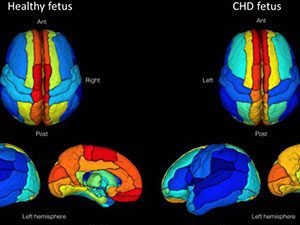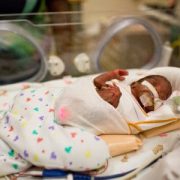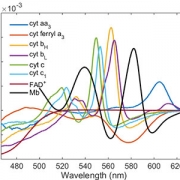
What’s Known
Congenital heart disease (CHD), a structural problem with the heart at birth, is the most common birth defect and impacts 8 of every 1,000 newborns.
While many infants with mild disease require no intervention, others have complex CHD that necessitates specialized treatment shortly after birth. Complex defects change how blood flows through the heart and to other organs—including the brain.
What’s New
Newborns with this diagnosis are at an elevated risk for neurodevelopmental disabilities, underscoring the importance of monitoring fetal brain development and function to identify which newborns need additional surveillance and medical intervention. Neuroimaging research in recent years has shown that resting-state functional magnetic resonance imaging (rs-fMRI) can provide critical insights into how the brain functions, at rest. The research team in the Developing Brain Research Laboratory at Children’s National Health System successfully measured brain function in 90 different brain regions in healthy resting fetuses and pregnancies complicated by CHD. The team reports for the first time that there was robust functional connectivity between hemispheres in both fetuses diagnosed with CHD and controls matched by gestational age. The Children’s researchers and clinicians, however, found that some functional connections were weakened in the association and paralimbic regions of the brain that are involved in attention, emotions, and behaviors.
Questions for Future Research
Q: Does decreased regional connectivity in these association and paralimbic brain regions in CHD-complicated pregnancies influence infants’ neurodevelopment after birth?
Q: Can rs-fMRI be used to identify early disturbances in brain development in CHD-complicated pregnancies, and can the imaging technique lead to improved surveillance and more timely therapeutic intervention?
Source: “Functional Brain Connectivity Is Altered in Fetuses With Congenital Heart Disease.” J. De Asis-Cruz, A. Yarish, M. Donofrio, G. Vezina, A. du Plessis, and C. Limperopoulos. Presented during the 2016 American Society of Neuroradiology Annual Meeting, Washington, DC. May 25 2016.












